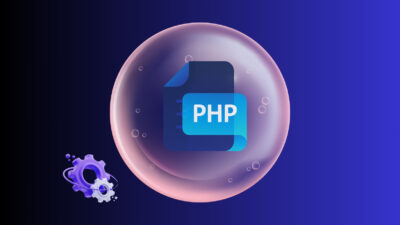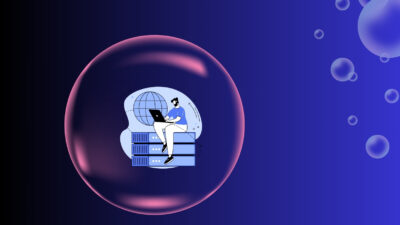In the world of web development, few programming languages have stood the test of time like PHP. From powering personal blogs to large-scale enterprise websites, PHP has remained a cornerstone of dynamic web applications for over two decades. But what exactly is PHP, and why is it so widely used?
In this article, we’ll take a deep dive into what PHP is, how it works, its key features, and why it continues to play a vital role in modern web development.
What is PHP?
PHP, which originally stood for Personal Home Page and now stands for PHP: Hypertext Preprocessor, is a powerful open-source server-side scripting language designed specifically for web development. It is embedded within HTML and is used to create dynamic, interactive web pages and applications.
When a PHP script is executed, it runs on the server and generates HTML (or other content types) that is sent to the user’s browser. Unlike front-end languages such as HTML, CSS, or JavaScript, PHP operates behind the scenes, handling everything from database queries to file uploads and user authentication.

A Brief History of PHP
PHP was created in 1994 by Rasmus Lerdorf as a set of Common Gateway Interface (CGI) binaries written in C to track visits to his online resume. Over time, it evolved into a full-fledged scripting language with a massive global community and ongoing support from The PHP Group.
Today, PHP powers some of the world’s most popular platforms, including:
- WordPress (which runs over 40% of all websites)
- Joomla, Drupal
- Magento
- Laravel (modern PHP framework)
- WooCommerce (eCommerce)
- WHMCS, phpMyAdmin, etc.
- Joomla
- Facebook (originally built using PHP)
How Does PHP Work?
PHP is typically installed on a web server (like Apache or Nginx) and executed via a PHP runtime. When a user visits a PHP-based web page:
- The server processes the PHP script.
- PHP performs any back-end operations (e.g., database access).
- The resulting HTML is sent to the user’s browser.
- The user never sees the PHP code — only the final output.
Key Features of PHP
PHP offers a wide array of features that make it one of the most preferred languages for server-side development:
Easy to Learn and Use
PHP has a gentle learning curve, making it ideal for beginners while still offering powerful tools for advanced developers.
Open Source and Free
PHP is completely free to use, supported by a vast community of developers who contribute to its growth and reliability.
Cross-Platform Compatibility
PHP runs on all major operating systems, including Windows, Linux, macOS, and works seamlessly with popular web servers and databases (like MySQL and PostgreSQL).
Flexible and Extensible
PHP supports a wide range of frameworks and libraries, including Laravel, Symfony, CodeIgniter, and PHPMailer.
Strong Database Integration
PHP connects easily with databases to create dynamic, data-driven applications. It works well with MySQL, MariaDB, Oracle, SQLite, and more.
Secure (When Used Properly)
While PHP has historically been targeted by vulnerabilities, modern PHP practices and frameworks offer robust security features such as input validation, password hashing, CSRF protection, and more.

Why Is PHP So Widely Used?
PHP’s popularity isn’t accidental. Here are some reasons why developers and businesses continue to choose PHP:
Maturity and Stability
With decades of development and refinement, PHP has become a stable, mature language that you can rely on for large-scale applications.
Massive Community and Ecosystem
PHP boasts one of the largest developer communities in the world. This means:
- Abundant learning resources.
- Countless open-source projects and tools.
- Fast support and updates.
Extensive CMS and Framework Support
Many powerful content management systems (CMS) like WordPress, Joomla, and Drupal are built on PHP, allowing developers to build feature-rich websites with less effort.
Cost-Efficient Hosting
Most web hosting providers offer native PHP support, making it affordable and easy to deploy PHP-based applications.
Rapid Development with Frameworks
Frameworks like Laravel, Symfony, and CakePHP enable faster, more secure development with built-in support for routing, templating, authentication, and more.
Where is PHP Used Today?
Despite the rise of newer languages and frameworks, PHP continues to dominate:
- E-commerce platforms: Magento, WooCommerce
- Blogging and publishing: WordPress
- Learning Management Systems: Moodle
- Custom business solutions: CRMs, booking systems, portals
- Web APIs and RESTful services
The Future of PHP
With regular updates and the release of powerful versions like PHP 8, PHP 8.1, PHP 8.2, PHP 8.3 the language continues to evolve. New features such as Just-In-Time (JIT) compilation, improved type handling, and performance optimizations ensure that PHP remains competitive in the ever-changing web development landscape.

Final Thoughts
PHP is more than just a scripting language — it’s the backbone of millions of websites and web applications around the world. Its blend of simplicity, flexibility, and power makes it a top choice for beginners and experienced developers alike.
Whether you’re building a simple contact form, a content-rich blog, or a fully customized web app, PHP gives you the tools and scalability to bring your ideas to life.
Want to start building with PHP? Stay tuned for our upcoming tutorials on getting started with PHP, connecting to databases, and building your first dynamic web page




[…] PHPMailer is one of the most popular libraries for sending emails using PHP. It’s robust, secure, and highly customizable. However, like any software component, keeping PHPMailer up to date is important for security, bug fixes, and compatibility with the latest PHP versions. […]